Electrophoretically prepared hybrid materials for biopolymer hydrogel and layered ceramic nanoparticles
- PMID: 26865985
- PMCID: PMC4748479
- DOI: 10.1186/s40824-016-0048-4
Electrophoretically prepared hybrid materials for biopolymer hydrogel and layered ceramic nanoparticles
Abstract
Background: In order to obtain biomaterials with controllable physicochemical properties, hybrid biomaterials composed of biocompatible biopolymers and ceramic nanoparticles have attracted interests. In this study, we prepared biopolymer/ceramic hybrids consisting of various natural biopolymers and layered double hydroxide (LDH) ceramic nanoparticles via an electrophoretic method. We studied the structures and controlled-release properties of these materials.
Results and discussion: X-ray diffraction (XRD) patterns and X-ray absorption spectra (XAS) showed that LDH nanoparticles were formed in a biopolymer hydrogel through electrophoretic reaction. Scanning electron microscopic (SEM) images showed that the ceramic nanoparticles were homogeneously distributed throughout the hydrogel matrix. An antioxidant agent (i.e., ferulic acid) was loaded onto agarose/LDH and gelatin/LDH hybrids, and the time-dependent release of ferulic acid was investigated via high-performance liquid chromatography (HPLC) for kinetic model fitting.
Conclusions: Biopolymer/LDH hybrid materials that were prepared by electrophoretic method created a homogeneous composite of two components and possessed controllable drug release properties according to the type of biopolymer.
Keywords: Agarose; Biopolymer; Ceramic; Controlled release; Electrophoretic synthesis; Gelatin; Layered double hydroxide.
Figures
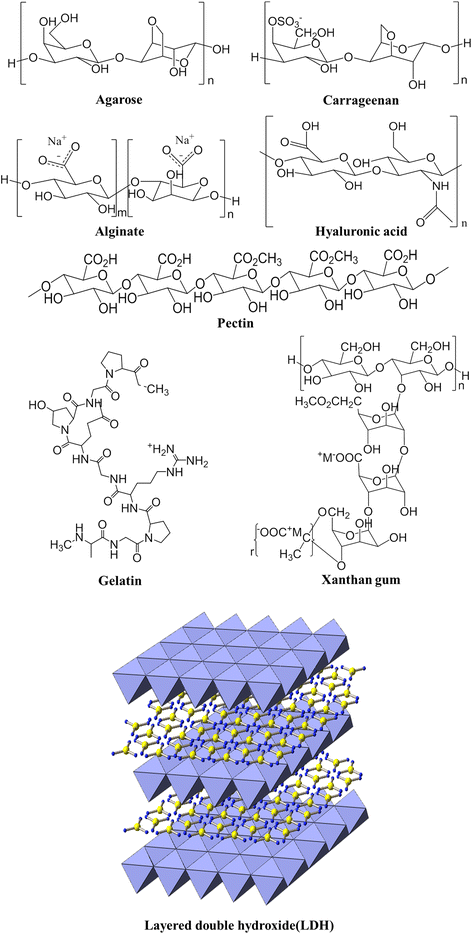
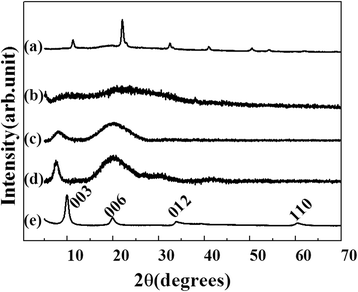
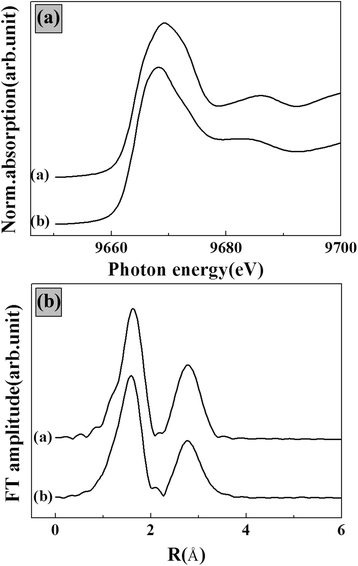
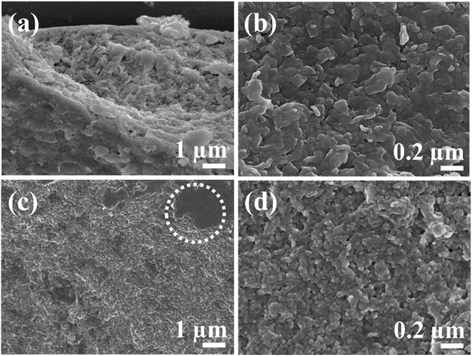
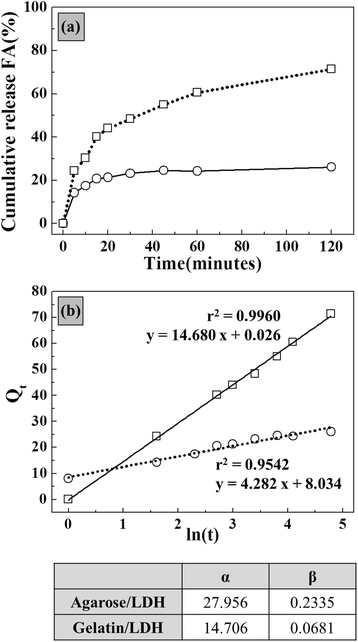
Similar articles
-
Composites of Quasi-Colloidal Layered Double Hydroxide Nanoparticles and Agarose Hydrogels for Chromate Removal.Nanomaterials (Basel). 2016 Jan 26;6(2):25. doi: 10.3390/nano6020025. Nanomaterials (Basel). 2016. PMID: 28344282 Free PMC article.
-
Layered double hydroxide/sepiolite hybrid nanoarchitectures for the controlled release of herbicides.Beilstein J Nanotechnol. 2019 Aug 9;10:1679-1690. doi: 10.3762/bjnano.10.163. eCollection 2019. Beilstein J Nanotechnol. 2019. PMID: 31467829 Free PMC article.
-
Structure and release properties of pyrethroid/sulfobutyl ether β-cyclodextrin intercalated into layered double hydroxide and layered hydroxide salt.Front Chem. 2022 Aug 5;10:894386. doi: 10.3389/fchem.2022.894386. eCollection 2022. Front Chem. 2022. PMID: 35991605 Free PMC article.
-
Surface modification of two-dimensional layered double hydroxide nanoparticles with biopolymers for biomedical applications.Adv Drug Deliv Rev. 2022 Dec;191:114590. doi: 10.1016/j.addr.2022.114590. Epub 2022 Oct 29. Adv Drug Deliv Rev. 2022. PMID: 36341860 Review.
-
Mixed Metal Oxide by Calcination of Layered Double Hydroxide: Parameters Affecting Specific Surface Area.Nanomaterials (Basel). 2021 Apr 28;11(5):1153. doi: 10.3390/nano11051153. Nanomaterials (Basel). 2021. PMID: 33925092 Free PMC article. Review.
Cited by
-
Synthesis and Biocompatibility Characterizations of in Situ Chondroitin Sulfate-Gelatin Hydrogel for Tissue Engineering.Tissue Eng Regen Med. 2017 Nov 14;15(1):25-35. doi: 10.1007/s13770-017-0089-3. eCollection 2018 Feb. Tissue Eng Regen Med. 2017. PMID: 30603532 Free PMC article.
-
Insights into the mechanisms of diabetic wounds: pathophysiology, molecular targets, and treatment strategies through conventional and alternative therapies.Inflammopharmacology. 2024 Feb;32(1):149-228. doi: 10.1007/s10787-023-01407-6. Epub 2024 Jan 11. Inflammopharmacology. 2024. PMID: 38212535 Review.
-
Hydrogel: A Potential Material for Bone Tissue Engineering Repairing the Segmental Mandibular Defect.Polymers (Basel). 2022 Oct 5;14(19):4186. doi: 10.3390/polym14194186. Polymers (Basel). 2022. PMID: 36236133 Free PMC article. Review.
-
Bioactive glass doped with noble metal nanoparticles for bone regeneration: in vitro kinetics and proliferative impact on human bone cell line.RSC Adv. 2021 Jul 25;11(41):25628-25638. doi: 10.1039/d1ra03876a. eCollection 2021 Jul 19. RSC Adv. 2021. PMID: 35478889 Free PMC article.
-
Wound healing strategies based on nanoparticles incorporated in hydrogel wound patches.RSC Adv. 2023 Jul 17;13(31):21345-21364. doi: 10.1039/d3ra03477a. eCollection 2023 Jul 12. RSC Adv. 2023. PMID: 37465579 Free PMC article. Review.
References
-
- Tathe A, Ghodke M, Nikalje AP. A brief review: biomaterials and their application. Int J Pharm Pharm Sci. 2010;2:19–23.
-
- Patel NR, Gohil PP. A review on biomaterials: scope, applications & human anatomy significance. Int J Emerging Technol Adv Eng. 2012;2:91–101.
-
- Lee HB. Needs and opportunities for the biomaterials industry. Polym Sci Technol. 1994;5:566–76.
-
- Griffith L. Polymeric biomaterials. Acta Mater. 2000;48:263–77. doi: 10.1016/S1359-6454(99)00299-2. - DOI
-
- Petzetakis N, Dove AP, O’Reilly RK. Cylindrical micelles from the living crystallization-driven self-assembly of poly (lactide)-containing block copolymers. Chem Sci. 2011;2:955–60. doi: 10.1039/C0SC00596G. - DOI
LinkOut - more resources
Full Text Sources
Other Literature Sources

